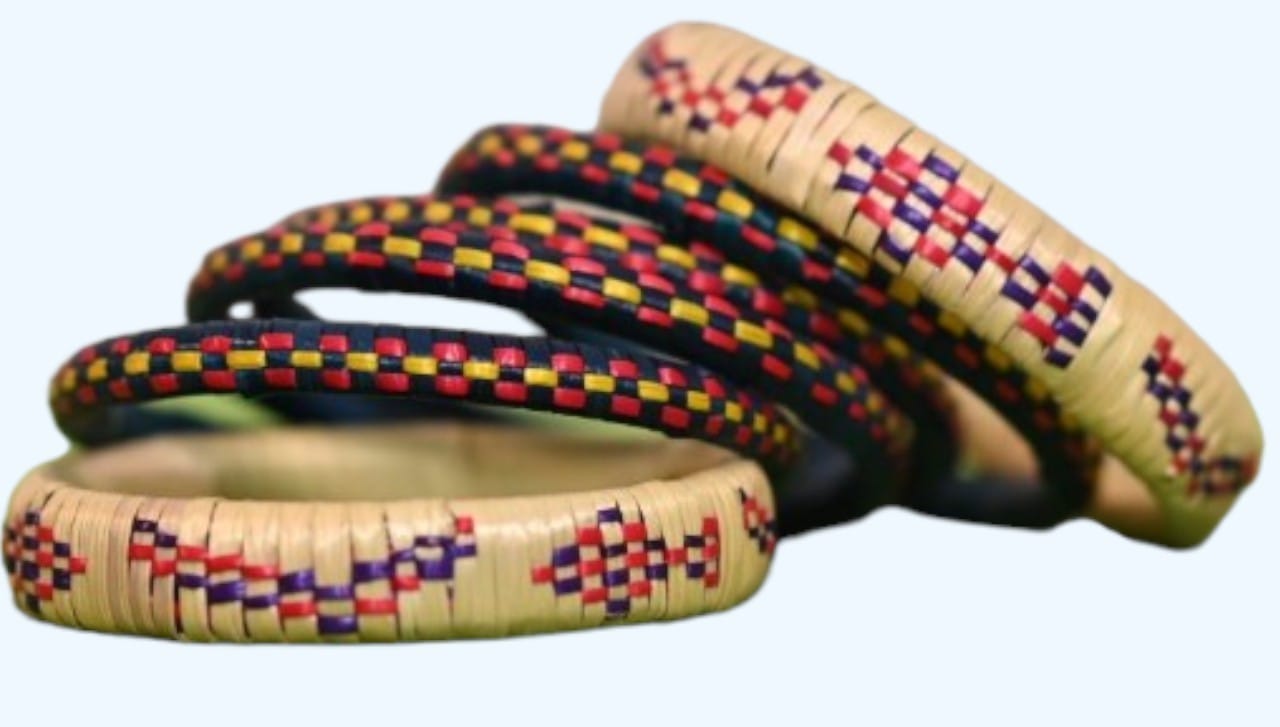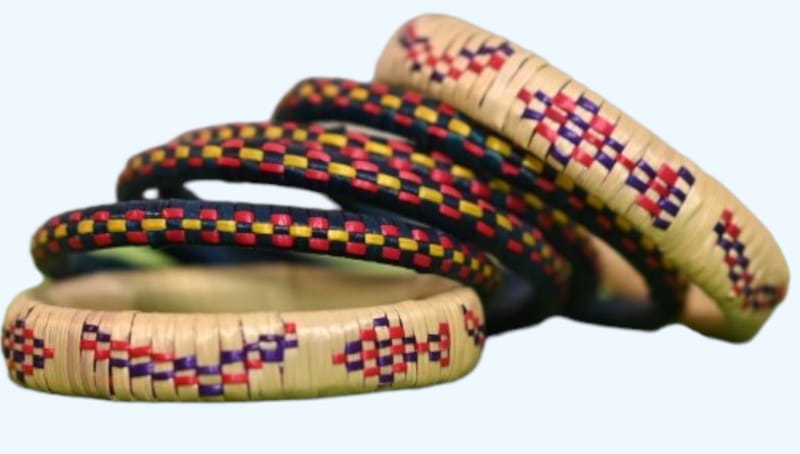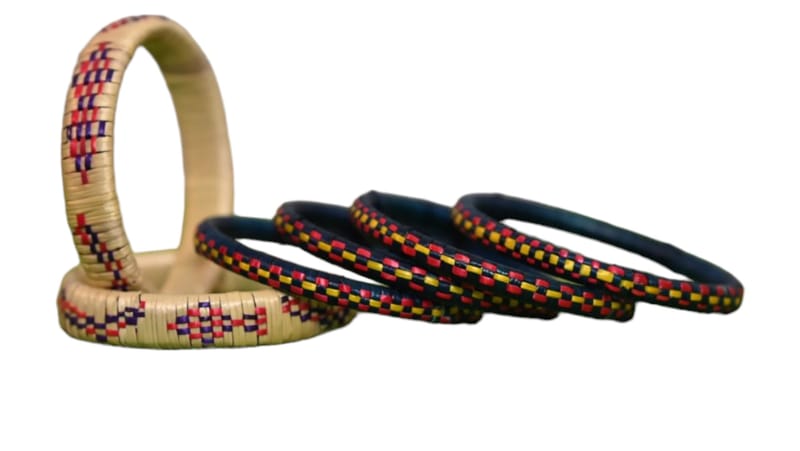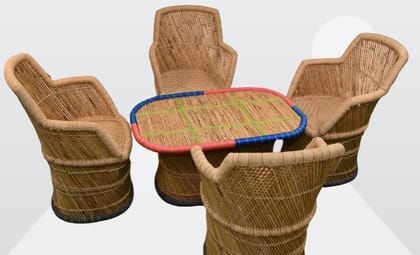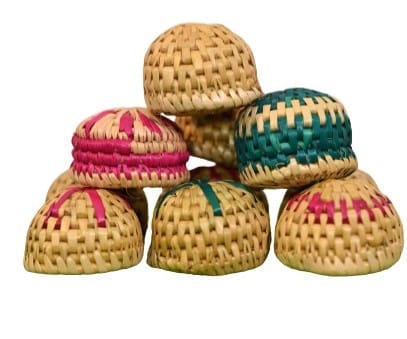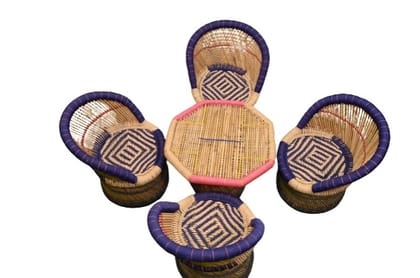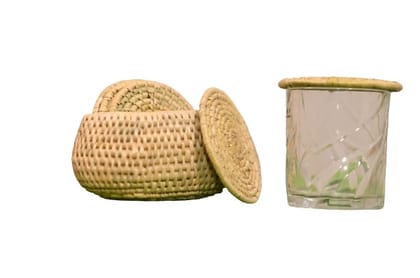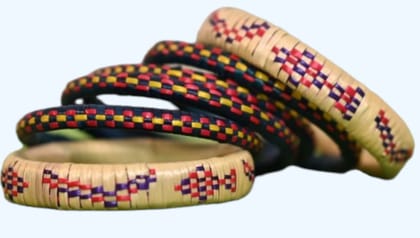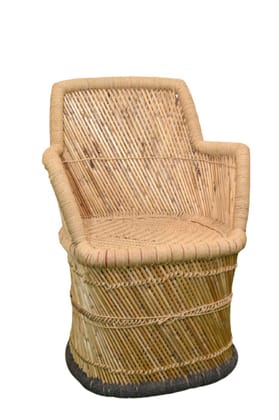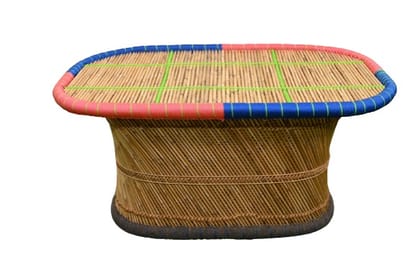Moonj Craft
Moonj Chundi, (Handmade Kangan)
MRP ₹1,099
| Country of origin | India |
|---|---|
| Brand | Moonj Craft |
| Common name | Chundi |
| Net Quantity | 1 unit |
| Weight | 20 g |
| Dimensions | 6*6*6 |
| Product Dimensions | 5*5*5 |
| Manufacturer or packer name | Utkarsh Handicraft |
| Manufacturer or packer address | Sultanpur |
| Manufacturing Date | 12/2023 |
| contact details consumer care | 8176876213 |
Moonj or munj is a type of grass that grows in the Indian subcontinent, primarily in regions like Punjab, Haryana, and Uttar Pradesh. Moonj grass is known for its durability and flexibility, making it ideal for weaving various products.
Moonj Chundi refers to a traditional handicraft made by weaving moonj grass. It involves intricate weaving techniques where the grass is twisted or woven together to create baskets, mats, rugs, coasters, and various other household items. Artisans often dye the moonj grass in vibrant colors before weaving to create visually appealing patterns.
The process of making Handmade Moonj Chundi involves skilled craftsmanship, typically passed down through generations. The resulting products are not only functional but also showcase the cultural heritage and artisanal skills of the region. These handicrafts are valued for their sturdiness, eco-friendliness, and aesthetic appeal.
Used Material
Moonj or munj is a type of grass that is commonly used for making various handicrafts and household items in India, particularly in regions like Bihar, Uttar Pradesh, and Madhya Pradesh. Moonj Chundi is a traditional handcrafted item made using moonj grass.
The materials used in making Moonj Chundi typically include:
Moonj Grass: This is the primary material used in crafting Moonj Chundi. Moonj grass is known for its strength and durability, making it suitable for weaving. It is usually harvested, dried, and then woven into different shapes and designs.
Thread or Twine: Sometimes, threads or twines made from natural fibers like cotton or jute are used to bind or weave the moonj grass together. These threads provide additional support and help in creating intricate patterns.
Decorative Elements: Depending on the design, Moonj Chundi might incorporate decorative elements like beads, shells, mirrors, or colored threads to enhance its aesthetic appeal.
Tools: Basic tools like scissors, needles, and sometimes small wooden frames might be used during the crafting process to cut, shape, and weave the moonj grass.
The process of making Moonj Chundi involves skilled craftsmanship, typically passed down through generations, where artisans weave the moonj grass into various shapes like baskets, mats, containers, or decorative items.
Please note that the specific materials and techniques used can vary based on the region and the artisan's preferences.
Finishing -
Moonj Chundi is a traditional Indian craft, particularly famous in the regions of Bihar and Uttar Pradesh. It involves weaving mats, baskets, and various utility products using a grass called moonj or munj. "Finishing" in handmade moonj chundi refers to the final steps taken to complete a product, ensuring its quality, durability, and aesthetics. This stage might involve several processes such as trimming excess materials, smoothing rough edges, reinforcing weak points, or adding decorative elements to enhance the overall appearance of the item. Finishing is crucial in ensuring that the handmade moonj chundi product is of high quality and ready for use or display.
Handmade Touch
Moonj Chundis are traditional handcrafted mats made using a technique called "Chundadi." This intricate craft involves weaving moonj grass, a sturdy and flexible natural fiber, into beautiful mats. The "handmade touch" in Handmade Moonj Chundis refers to the entire crafting process being done by hand, emphasizing the skill, artistry, and labor-intensive nature of creating these mats.
The handmade touch involves various steps:
Harvesting Moonj Grass: Artisans collect moonj grass, typically found in marshy areas, and dry it to prepare it for weaving.
Dyeing (if required): Sometimes, artisans dye the moonj grass using natural dyes to achieve vibrant colors before weaving.
Weaving: Skilled artisans weave the dried or dyed moonj grass using traditional techniques passed down through generations. They employ different weaving patterns, colors, and designs to create unique Chundis.
Finishing: Once the weaving is complete, artisans finish the edges or add decorative elements to enhance the beauty of the mat.
The "handmade touch" in Handmade Moonj Chundis signifies the craftsmanship, attention to detail, and cultural heritage embedded in each piece. These mats often reflect the rich tradition and artistry of the regions where they are made, showcasing the dedication and skill of the artisans involved in their creation.
DIMENSION: 04*04*04 inch
Weight 10 gm

Sold By
Utkarsh Handicraft
